everythingeverywhereallatonce, strictly school chronicles, no copyright infringement intended <3
Don't wanna be here? Send us removal request.
Text
Algorithmic Harmony: Navigating Musical Serendipity and Fandom Discoveries
Have you ever had the joyous experience of stumbling upon your next favorite song in the most unexpected way? Perhaps it was a track by an artist you had never heard of, prompted by a captivating album cover or a song title that resonated with you. If you've found yourself in this blissful moment of musical serendipity, consider yourself fortunate – the algorithm gods were at work, tailoring your musical journey with precision.
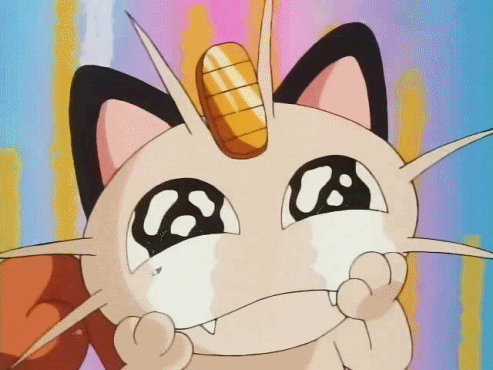
This is a tale of how music and fandom discovery unfold through the intricate dance with algorithms. In a world where the next sonic adventure is just a click away, I found myself captivated by the melodies of an artist I hadn't known before, drawn in by the algorithmic magic that led me to his unique sound.
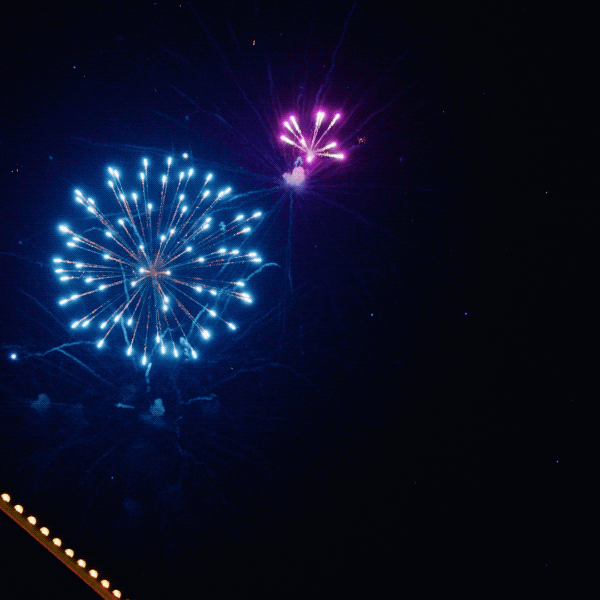
As I became captivated by this artist, I found myself delving into the depth of their fandom, exploring the digital communities that amplify the passion and connection shared by fans around the world. This is the story of how, in the age of algorithms, every click holds the potential to unveil a new chapter in your musical journey and immerse you in the vibrant tapestry of fandom culture.
The Discovery
One day, I found myself navigating the endless sea of YouTube videos, and in the vast expanse of digital possibilities, serendipity struck. A splash of vibrant blue caught my eye—an album cover named "Big Wave." Its colours, so vivid and reminiscent of summer, drew me in with an irresistible allure.

Intrigued, my cursor hovered over a track called "Magic Ways." With no preconceived notions, I clicked, and in an instant, I was transported to a different world. The music resonated with a kind of enchantment I hadn't expected. The rhythm, the melody – it was an auditory journey that captivated my senses.
Curiosity led me to the comments section, a digital agora where opinions and discoveries intertwine. Amidst the collective musings of fellow listeners, I unveiled the enchanting world of Japanese City Pop—an intricately woven genre with R&B and jazz influences, dating back to the late 1970s and 1980s.
During this era, Japan soared as the world's second-largest economy, poised to surpass the West with its corporate dominance and cutting-edge technology. Upwardly-mobile Japanese citizens embraced a life of luxury, adorned in designer clothes, sipping imported wine, and traversing the globe. The advent of the Sony Walkman and sophisticated car stereos allowed them to curate their on-the-go soundscapes, transforming casual strolls through the city and weekend joy rides into cinematic experiences. City Pop emerged as the soundtrack to this cosmopolitan lifestyle.
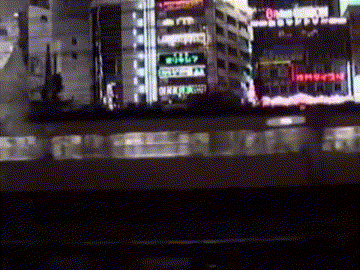
The music itself, often exuberant and glitzy, drew inspiration from American styles like funk, yacht rock, boogie, and lounge music. However, the splendor and ease embodied by city pop faced an inevitable downturn. In the harsh reality of the 1990s, Japan's economic bubble burst, thrusting the country into its “lost decade.” This historical context rendered my discovery all the more special, a glimpse into a bygone era that had momentarily slipped away. (Zhang, 2021)
At that time, the allure of city pop hadn't yet transcended the borders of Japan, turning my discovery into a sensation akin to stumbling upon a hidden treasure, a gem waiting to be unearthed from the folds of history.
But the lingering question remained: How did YouTube know I would be drawn to this kind of music? The algorithms seemed to understand the language of my preferences even before I did. In a world where every click leaves a trace, it was as if YouTube's algorithmic magic had orchestrated a symphony tailored precisely to the nuances of my musical taste, opening the door to a realm of Japanese City Pop that awaited exploration.
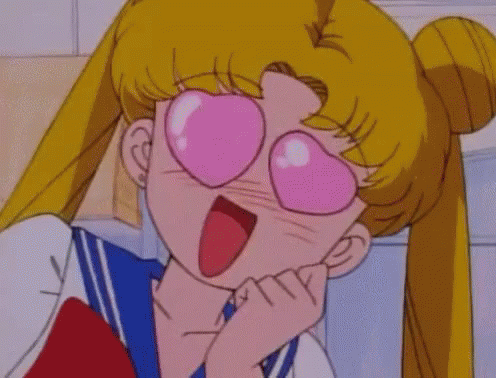
As I assessed the factors that brought "Magic Ways" to my YouTube feed, I realized that my immersion in the world of lo-fi music and extended jazz playlists had painted a vivid portrait of my musical preferences. The algorithm, a vigilant observer of my likes and watch history, seemed to anticipate my evolving taste. Furthermore, around 2016-2017, the genre "vaporwave" experienced a surge in popularity. Defined partly by its slowed-down, chopped, and screwed samples of smooth jazz, 1970s elevator music, R&B, and lounge music from the 1980s and 1990s, vaporwave heavily sampled from Japanese City Pop songs during that time, creating a nostalgic and disorienting sonic landscape (Rinehart, 2023). Japanese City Pop, with its inherent nostalgia, seamlessly fit into this musical milieu.

Around the same time, "Plastic Love," a Japanese City Pop song by Mariya Takeuchi, started gaining popularity. A remix of the song by future funk artist Night Tempo, released on March 11th, 2016, garnered over 2.4 million views.
youtube
Beyond that, the surge in popularity sparked discussions within online communities, notably on the /r/listentothis subreddit, where it gained significant attention. This exposure, fueled by the enthusiasm of the Reddit community, inevitably led to the song popping up in YouTube recommendations. It was through this virtual serendipity that I was introduced to "Magic Ways," and it swiftly became one of my favorite songs.

Platforms like tumblr or pinterest and other forms diluted the lines blending Japanese otaku culture with mainstream pop culture making city pop’s resurgence a testament to its timelessness.
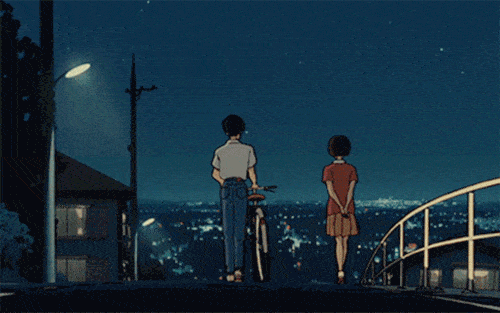
In this delicate connection between personal preferences, algorithmic insights, and the vibrant energy of digital communities, the magic of YouTube's recommendation algorithms becomes more than a sequence of code; it transforms into a symphony that resonates with the collective harmony of music enthusiasts across the digital landscape.
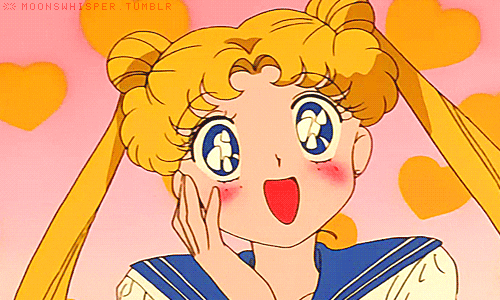
References
Zhang, C. (2021, February 24). The endless life cycle of Japanese city pop. Pitchfork. https://pitchfork.com/features/article/the-endless-life-cycle-of-japanese-city-pop/
Rinehart, J. (2023, July 23). What is Vaporwave? And Why Is It So Popular? DITM. https://www.deepinthemix.com/what-is-vaporwave/
3 notes
·
View notes
Text
Melodies of Unity: Unveiling the Intriguing Crowdsourcing Tale Within Bob Dylan's 'The Basement Tapes'
In the realm of music, the term 'crowdsourcing' often elicits collective sighs of boredom. But what if I told you that within the unexplored corners of Bob Dylan's Woodstock basement, there's a different kind of crowdsourcing story unfolding—one that doesn't feel like a dry business concept but rather a vibrant narrative waiting to be discovered?
This is not your average crowdsourcing tale; this is a journey through the enchanting tapestry of Bob Dylan's 'The Basement Tapes.' In this unconventional adventure, boredom takes a backseat, and the magic of collaboration comes to life in a story that's as fascinating as it is musical.

Dylan had been on a spiraling creative path prior to the release of "The Basement Tapes," taking a lengthy hiatus from the spotlight. The world watched as the musician, whose folk ballads had once stoked the flame of rebellion, retreated from the forefront of the music industry. His daring transition from folk to electronic music had shocked his fan base years earlier (Hughes, 2000). The artist was dealing with the ups and downs of public opinion during this uncertain time, which was marked by the betrayal felt by fans and the booing that reverberated in concert halls.
Dylan was back
As the years unfolded, Dylan's absence from the studio heightened the anticipation among his dedicated followers. When whispers circulated that he had retreated to Woodstock with The Band for a series of informal recording sessions, the music world held its breath. In the genesis of "The Basement Tapes," where Dylan's creative energy intermingled with The Band's raw musicality, a treasure trove of recordings emerged.
At first, what reached the public was not a polished studio release but acetates—demos distributed for the purpose of publishing. These acetates, containing early versions of songs like "Too Much of Nothing," were intended for the ears of publishers, a glimpse into the artist's creative process. The original publishing demos began circulating in 1968, taking a life of their own as enthusiasts and collectors embraced the rare opportunity to delve into Dylan's raw, unfiltered artistry.
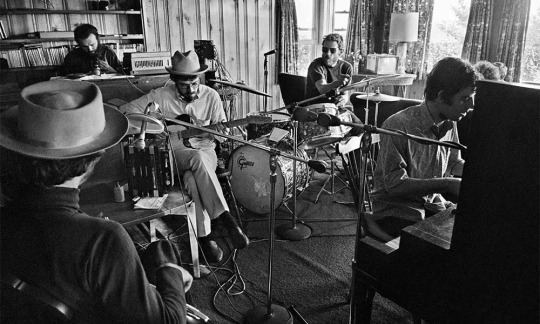
How it started
Serendipity struck when, in 1969, two enthusiasts in California decided to compile these unreleased materials into a makeshift two-LP set titled "The Great White Wonder." It wasn't a pristine recording; some Basement Tape songs ran fast, and imperfections adorned the tracks. However, these were enthusiastic amateurs driven by a profound love for Bob Dylan's music. Little did they know that their haphazard creation would set off a chain reaction in the world of crowdsourcing.
This marked the birth of the first substantial pop music bootleg—an endeavor born not out of profit but out of sheer passion. The definition of crowdsourcing came into play as the bootleg made its way to Sweden, where enthusiasts added a couple of other songs. Simultaneously, in New York, another individual did the same, igniting a ripple effect. The bootleg became a catalyst, inspiring people to bootleg the bootleg, and others, who got hold of the full acetate, started issuing just the acetate. The proliferation was so extreme that it became impossible to catalog who was doing what.
What began as a minor Bob Dylan fan club swiftly transformed into a burgeoning bootleg industry. A Rolling Stone cover story by Jann Wenner advocated for the official release of Bob Dylan's Basement Tapes. Wenner argued that the material represented a terrific and innovative perspective on the world, questioning why it remained unreleased when the songs had already found their way onto the radio (Wenner, 2018). By 1975, Bob Dylan agreed to release it officially.

The Release
When "The Basement Tapes" finally hit the shelves, the public's thirst for Dylan's music seemed poised to be quenched. However, the two most famous songs on the tape, "I Should Be Released" and "Mighty Quinn," were conspicuously absent, leaving fans yearning for more. It was then that fans discovered The Band had recorded for months, and there was much more material hidden away in that Woodstock basement.
In the years that followed, enthusiasts embarked on a scavenger hunt for these hidden gems. The unreleased material trickled out in dribs and drabs—on LPs containing other content, on tapes passed from hand to hand. The Basement Tapes, once confined to obscurity, became a symbol of crowdsourced dedication—a collaborative effort by fans to unveil every note recorded in that fabled basement.
This isn't just a tale of tapes; it's a saga of a musician’s return, a narrative of fans-turned-archivists, and a celebration of the collaborative spirit that transcends the confines of music history. 

Digital Disperse
The allure of The Basement Tapes didn't confine itself to physical spaces; it transcended into the digital realm, where online communities flourished. Enthusiasts, once limited by geographical boundaries, now found themselves connected through the vast expanses of the internet. Online forums and fan communities became the virtual epicenter for shared excitement, discussions, and collaborative exploration of the treasure trove that Dylan's Woodstock basement had birthed.
Digital Treasure Maps: Online forums emerged as digital treasure maps, guiding fans through the labyrinth of unreleased recordings and rare gems. Dedicated threads dissected each note, lyric, and anecdote, fostering a shared passion that spilled beyond the boundaries of a webpage.
As the digital landscape expanded, so did the avenues for fan engagement. Social media platforms, with their instantaneous reach, played a pivotal role in amplifying the communal heartbeat of The Basement Tapes. Facebook groups dedicated to Dylan's discography became digital living rooms where fans swapped stories, shared discoveries, and debated the nuances of each track. 
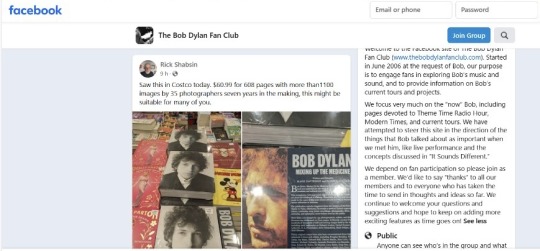
Twitter's Echo Chamber: Twitter, with its succinct conversations, transformed into an echo chamber of Dylan enthusiasts. Hashtags like #BasementTapes and #DylanDiscovery trended globally, creating a virtual gathering where fans from diverse backgrounds celebrated the timeless allure of Woodstock's basement recordings.
YouTube's Sonic Canvas:YouTube channels, a kaleidoscope of auditory and visual interpretations, showcased cover performances, analyses, and fan-made documentaries inspired by The Basement Tapes. The global stage of YouTube transformed solitary listening into a communal experience, where the music of Dylan resonated across borders.
Finally
In the tape's assembly, we witness a profound embodiment of the term crowdsourcing — a creation for the public, by the public. The collaborative efforts of fans, enthusiasts, and musicians from around the world mirror the true spirit of crowdsourcing, transforming The Basement Tapes from a hidden gem to a shared cultural treasure. This musical odyssey stands as a testament to the power of collective passion, where the ordinary becomes extraordinary through the collaboration of the public, for the public.
References
Hughes, T. (2000). A review ofInvisible Republic: Bob Dylan’s basement tapes, by Greil Marcus. Contemporary Music Review, 18(4), 159–169. https://doi.org/10.1080/07494460000640101
youtube
Wenner, J. S. (2018, June 25). Rolling Stone. Rolling Stone. https://www.rollingstone.com/music/music-news/dylans-basement-tape-should-be-released-233261/
0 notes
Text
Beyond the Screen: Illuminating 'Euphoria' and the Impact of TV Narratives on Public Health Discourse in the Digital Era
 In the world of storytelling, "Euphoria" emerges as a daring mirror reflecting the complexities of our society, transcending the glittering veneer of parties to delve into the raw realities faced by today's youth—addiction, mental health, and intricate relationships. In this journey through the neon-lit streets and tumultuous lives of its characters, we dissect not just the on-screen narratives but also navigate the digital landscapes where conversations about "Euphoria" thrive. From trending hashtags to online forums, the show's impact extends beyond the screen, shaping the discourse on public health in the digital age.

However, beneath this captivating narrative lies a pivotal question: Does the portrayal of public health issues on television serve as a healthy awareness tool? Does "Euphoria" illuminate or glamorize the struggles it depicts? Let’s find out!

Euphoria: A Journey through the Turbulent Realities of Youth
In the vivid landscape of "Euphoria," Zendaya embodies the complex protagonist, Rue Bennett, a teenager grappling with addiction, depression, and anxiety. Rue's authenticity lies in her constant struggles and the raw portrayal of the pain associated with these issues. Season one meticulously illustrated Rue's attempt to break free from the chains of drug addiction, offering viewers an unfiltered glimpse into the challenges of overcoming such hurdles. What sets Rue apart is her imperfection, her humanity laid bare in the face of adversity. Yet, she's not alone in her flaws.
The ensemble cast brings forth an array of narratives, each character unveiling a unique story. Alexis Demie, as Maddy Perez, unravels the repercussions of a dark and tumultuous childhood, navigating toxic relationships. Hunter Schafer's character, Jules Vaughn, becomes a powerful voice, sparking dialogues about transgender experiences in a world often marked by intolerance. Barbie Ferreira, portraying Kat Hernandez, delves into the intricacies of body image insecurities, while Sydney Sweeney's Cassie Howard embarks on a journey of self-love and acceptance. Through these characters, "Euphoria" masterfully crafts a mosaic of real struggles faced by many teens and young adults, rendering it a brilliantly ingenious and empathetic creation (Tilakaratne, 2022). To ensure the authenticity of these portrayals, "Euphoria" took a deliberate approach. Mental health professionals were consulted, and real-life experiences were woven into the narrative tapestry. Interviews with the cast and creators reveal meticulous research and sensitivity, underscoring the commitment to accuracy and realism that has earned praise from both mental health advocates and viewers (Tilakaratne, 2022).
Beyond mere entertainment, "Euphoria" serves as a catalyst for societal conversations. By bringing mental health struggles to the forefront, the series has not only increased awareness but has also played a role in destigmatizing these conditions. It acts as a platform, igniting discussions among viewers, fostering a space for sharing personal experiences and seeking support. The unflinching portrayal of mental health in "Euphoria" has become a driving force in a cultural shift where these issues are openly acknowledged and addressed.
Character Depth
As we explore the depths of "Euphoria," addiction emerges as a central theme, with Rue Bennett at its emotional core. Portrayed by Zendaya, Rue's battle against addiction serves as a poignant illustration of its devastating impact on life and relationships. Through Rue's journey, the show confronts the harsh reality of addiction, shedding light on the formidable struggles faced by those attempting to break free from its grip (Akhtar, 2023).

Hunter Schafer's character, Jules Vaughn, takes us on an exploration of gender identity and self-discovery. "Euphoria" delves into the complexities of Jules' gender identity journey, emphasizing the significance of her relationships, particularly her bond with Rue. Vulnerability and self-acceptance become key themes, as the show unravels Jules' struggles with love, trust, and embracing her authentic self.

Nate Jacobs, portrayed by Jacob Elordi, embodies toxic masculinity and its destructive impact on relationships. His character's struggle with identity is entangled with complex family dynamics, especially his tumultuous relationship with his father, Cal. The show delves into the consequences of Nate's actions, illustrating the destructive cycle of toxic masculinity and the toll it takes on those involved.

Cassie Howard, portrayed by Sydney Sweeney, navigates the challenges of reclaiming self-worth and breaking free from societal pressures regarding body image. "Euphoria" delves into her vulnerabilities, showcasing the complexity of her relationships and the internal struggles she faces.

Barbie Ferreira's Kat Hernandez becomes a symbol of empowerment for female sexuality, breaking free from societal expectations. The show explores the power of support and growth between women through her friendship with Cassie, emphasizing the importance of self-acceptance and self-love. Additionally, Kat's online persona and the exploration of consent contribute to a nuanced portrayal of sexual self-discovery (Akhtar, 2023).

Digital Communities and Social Media Amplification:
The cultural impact of "Euphoria" extends far beyond the confines of traditional television, permeating the digital spaces where conversations thrive. Social media platforms, particularly Twitter and Instagram, serve as virtual arenas where viewers converge to share, dissect, and passionately discuss the show's pivotal moments. In a testament to its global resonance, there were over 15.44 million mentions of "Euphoria" on Twitter globally in just two months, making it the most discussed TV show for a decade, as declared by Twitter itself. The conversation spanned from intricate plotlines to stellar performances, creating a digital tapestry that captured the essence of the series (Hannahcurrey, 2022).
The Instagram page dedicated to "Euphoria" boasts a staggering 7.1 million followers, underscoring the visual allure and cultural magnetism of the show. Furthermore, the individual social media followings of the Gen Z talent cast members contribute to the digital phenomenon. Zendaya commands an impressive 131 million followers, Hunter Schafer with 6.5 million, and Jacob Elordi with 12.7 million, showcasing the show's ability not only to captivate audiences on screen but also to cultivate a dedicated online community (Hannahcurrey, 2022).
According to Twitter's statistics, the engagement surged to an impressive 30 million tweets since the beginning of the second season, marking a remarkable 51% increase compared to the show's first season in the summer of 2019. Memes, a language of their own on social media, played a significant role in shaping these discussions. Whether it was expressing disdain for characters like Nate Jacobs or contributing to the chaos surrounding the Cassie-Maddy feud, the digital discourse manifested in creative and often humorous ways (Lutz, 2022). Additionally, the phenomenon of 'shipping,' exemplified by the fan-favorite pairing 'Fexi' (Lexi and Fezco), added a layer of digital storytelling to the social media narrative.
Impact on Audience Perceptions:
The impact of "Euphoria" transcends the screen, seeping into the minds and perceptions of its audience. Social media becomes a dynamic space where viewers not only consume but actively engage with the show's themes. Positive and neutral reactions to "Euphoria" emerge as a dominant force, with Redditors expressing a resonance with the authentic portrayal of substance use disorders (SUDs) and the challenges faced by high school students entangled in the world of drugs. Discussions on Reddit often delve into personal connections, with viewers relating to specific scenes and praising the show's ability to accurately depict the complexities of drug use.
Redditors commend the series for its realistic portrayal, appreciating how it captures the essence of what SUDs entail and the experiences of individuals grappling with addiction. The ability to empathize with the characters stems from their perceived authenticity, resonating with viewers' personal experiences. However, this authenticity, while praised by many, also becomes a double-edged sword, triggering negative reactions among some viewers. Scenes that hit close to home or depict the graphic nature of drug use can be challenging to watch, revealing the fine line between genuine representation and potential discomfort (Kaufman et al., 2021).


Positive and Negative Aspects:
The digital discourse surrounding "Euphoria" on platforms like Reddit provides a nuanced exploration of both positive and negative dimensions. Redditors engage in thoughtful analysis, acknowledging the show's strength in realistically depicting SUDs. Discussions highlight the relatability of characters, particularly Rue, as they mirror the struggles faced by those dealing with addiction. Scenes such as Rue's desperate plea for more drugs are dissected for their authenticity and portrayal of character arcs.
However, the online community exhibits a definitive divide in perceptions. While some Redditors applaud the show for its realism, others argue that certain depictions, such as Rue's seemingly easy path to sobriety, lack authenticity. The alleged glorification of substance use becomes a point of contention, unsettling some viewers who find it disturbing. The discussions extend to debates on the accuracy of the show's portrayal of mental health issues, with varying opinions on the realism of certain scenes and their potential to trigger discomfort (Kaufman et al., 2021).
The digital communities orbiting "Euphoria" function as dynamic spaces of interpretation, critique, and celebration. Social media platforms amplify the impact of the show, creating a global dialogue that transcends traditional viewership. As the online discourse navigates the complexities of public health themes, it becomes a reflection of the broader societal conversations sparked by the series. The positive and negative aspects coexist in this digital realm, revealing the multifaceted nature of "Euphoria's" influence on audience perceptions and discussions around mental health and substance use.
Assuming Responsibility: HBO's Support for Mental Health
In 'Euphoria,' the portrayal of illegal substances and overdoses transcends glamorization, serving as a symbolic representation of real struggles. Rue's battles with substance abuse and bipolar disorder are intricately woven into the show's fabric. Through flashbacks and angelic scenes, her use of drugs becomes a symbolic reflection of the effects caused by substance abuse—a poignant portrayal of a public health crisis, the opioid epidemic.
While the show may not explicitly delve into public health discussions, it undertakes the responsibility to realistically depict elements of the crisis through its characters and themes. HBO, recognizing this responsibility, extends support to viewers by providing a crisis text line and links to addiction, mental health, and suicide prevention information on Euphoria's website at the end of each episode (Kaufman, 2) (Alice.Mendelev, n.d.)
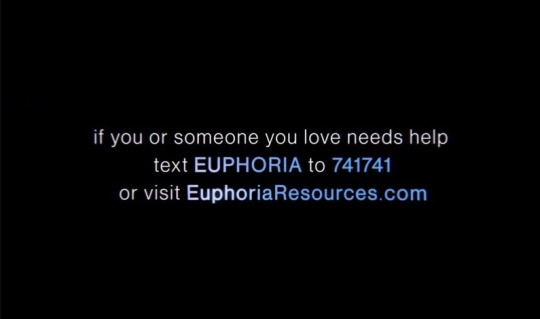
Euphoria's Impact on Public Health Discourse: Navigating Contributions, Challenges, and Media Responsibility in the Digital Age"
In our exploration of media's pivotal role in public health discourse, "Euphoria" emerges as a compelling case study, actively shaping and challenging societal conversations about health. The series dives into the complexities of mental health, addiction, and societal pressures, authentically portraying characters like Rue Bennett. Positive aspects resonate strongly, with meticulous research and engagement in digital communities, contributing to destigmatizing mental health on platforms like Reddit.
However, challenges arise as the show confronts uncomfortable realities, sparking debates on substance use portrayal and navigating the fine line between realism and potential triggers. The digital discourse mirrors societal attitudes, with varied reactions from appreciation to discomfort and critique. "Euphoria" not only reflects public perception but actively influences it, with social media platforms becoming spaces for millions to engage, share experiences, and seek support.
The series prompts crucial reflections on storytelling ethics, emphasizing the responsibility to balance authenticity and potential harm, especially in the digital age.
"Euphoria" transcends mere entertainment, becoming a transformative force that not only shapes the narrative around mental health and substance use but also amplifies conversations, contributing significantly to a cultural shift in our digital era.
So what do you think?
References
Kaufman, M. R., Bazell, A., Collaco, A., & Sedoc, J. (2021). “This show hits really close to home on so many levels”: An analysis of Reddit comments about HBO’s Euphoria to understand viewers’ experiences of and reactions to substance use and mental illness. Drug and Alcohol Dependence, 220, 108468. https://doi.org/10.1016/j.drugalcdep.2020.108468
Lutz, J. (2022, February 26). Euphoria becomes the Most-Tweeted about show of this decade. Collider. https://collider.com/euphoria-most-tweeted-series-2020-zendaya/
Alice.Mendelev. (n.d.). Euphoria and the Romanticization of Mental Health and Substance Abuse – Studies in Visual Cultures – ENG 705. https://visualculture.blog.torontomu.ca/euphoria-and-the-romanticization-of-mental-health-and-substance-abuse/
Akhtar, S. A. (2023, June 7). Unveiling the Multifaceted Characters of Euphoria: A Journey through Love, Struggles, and Self-Discovery. Streaming Digitally PH. https://www.streamingdigitally.ph/entertainment/euphoria/unveiling-the-multifaceted-characters-of-euphoria/
Akhtar, S. A. (2023, June 7). The realistic portrayal of mental health in euphoria. Streaming Digitally PH. https://www.streamingdigitally.ph/entertainment/euphoria/the-realistic-portrayal-of-mental-health-in-euphoria/
Tilakaratne, W. (2022, January 24). Here's How Euphoria Makes Mental Health Issues Relatable. MovieWeb. https://movieweb.com/euphoria-mental-health/
0 notes
Text
From Streets to Symbols: Unveiling the Power of Graffiti, Art, Music, and Culture in Protest Movements – A Spotlight on the Sudanese Revolution
Have you ever found yourself associating a dance move with a particular era or linking a pose to a significant cultural moment? Such connections often transcend the boundaries of the physical, seeping into the realms of art, music, and cultural symbols. In Sudan, the evolution of symbols during the revolution was nothing short of poetic. The Sudanese revolution of 2019 serves as a compelling canvas where these forms of expression converged, giving rise to the Kandaka with the white toub—a powerful symbol of resistance that echoed the collective voices of a nation yearning for change.

Graffiti and Street Art as Voices on Walls
During Sudan’s 2019 revolution, as people mobilized across the country with sit-ins, marches, boycotts, and strikes, artists helped capture the country’s discontent and solidify protesters’ resolve (How Art Helped Propel Sudan’s Revolution, n.d.). What started as protests against rising food and fuel costs turned into a coup where millions marched to overthrow al-Bashir after 30 years in power.
Artists became an integral part of the months-long sit-in at the military headquarters in Khartoum, known as the heart of the revolution. This expression of creativity was both a result of loosening restrictions on freedom of expression and a catalyst for further change.
Artists throughout Sudan used graffiti to spur conversations about the trajectory of the country and also used murals to share information about dates and times of protests. Jonathan Pinckney, program officer and research lead for USIP’s program on nonviolent action, pointed out that art has played a role in many major nonviolent struggles to create a shared vocabulary (How Art Helped Propel Sudan’s Revolution, n.d.).

Hussein Merghani’s watercolor of hundreds of people from Atbara traveling to join the sit-in at the military headquarters in Khartoum in April 2019.

A mural by Galal Yousif near the sit-in site reads “you were born free, so live free.” (Sari Ahmed Awad)
Visual Arts and Popular Culture: The Kandaka and the White Toub:
In a society where patriarchy and male dominance prevail, it's quite surprising that a woman emerged as a symbol of protest. The kandake, breaking stereotypes, became an iconic figure, showcasing the resilience of Sudanese women who have long been leaders in the country’s revolutions. Since 1989, when Omar al-Bashir seized power, women faced curtailed rights under vaguely defined moral and penal codes, notably the 1991 Public Order Laws dictating women's public conduct, movement, and even clothing. Despite these oppressive measures, women persisted in their fight against al-Bashir's rule, playing a pivotal role in mobilizing protests.
This resilience found a remarkable face in a young student named Alaa Salah, captured in a moment of protest wearing a white toub and traditional jewelry. Standing atop a car, she passionately chanted revolutionary poetry, expressing the collective frustrations: “They imprisoned us in the name of religion, burned us in the name of religion … killed us in the name of religion,” met with the resounding response of “revolution” from the crowd (Ismail and Elamin 2019). This powerful image swiftly went viral in Sudan, becoming a catalyst for countless Sudanese artworks, ranging from political caricatures to paintings to graffiti on Khartoum's streets.
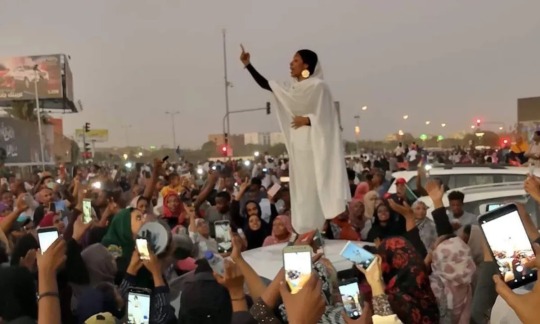
What makes this image truly iconic is the symbolism embedded in the white toub—a garment worn by women of all classes, considered a democratic attire that doesn't conform to strict piety rules promoted by Islamists. Urban upper- and middle-class women, by embracing the toub, transcended ethnic and social differences, actively promoting unity. The resonance of this image extended beyond its visual impact, inspiring a wave of artistic expressions that echoed the collective call for change on the streets of Khartoum.
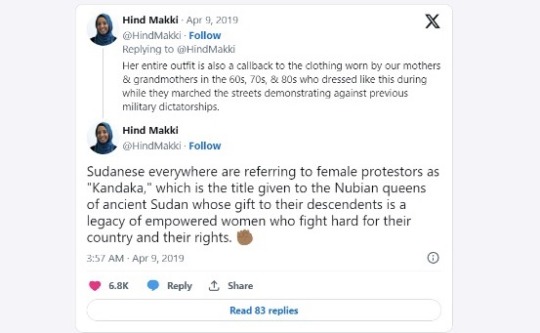
The Digital Canvas: Social Media as the New Protest Wall
When delving into the role of digital communities and social media in amplifying protests, particularly within Sudan, one cannot overlook the pivotal role online communication played during the revolution. However, these efforts faced substantial hurdles due to government-initiated internet outages and blockages targeting key sites.
Despite these challenges, the #SudanUprising hashtag emerged as a crucial tool, enabling people to stay connected with the diaspora and providing a real-time feed of events. This hashtag echoed resoundingly across various digital platforms, effectively transforming cyberspace into a dynamic virtual protest ground.
As the Kandaka and the white toub began to capture hearts on social media, the digital realm evolved into a powerful conduit for spreading awareness and mobilizing global support. The viral nature of these symbols transcended geographical boundaries, forging a united global community in solidarity with Sudan's impassioned fight for justice. Journalists, activists, and human rights groups closely followed #SudanUprising, receiving updates in English, while international organizations such as the UN and Amnesty unequivocally condemned the attacks on the protesters.
During the persisting blackout, more details about the tragic June 3 attack unfolded, revealing a grim toll – over 100 lives lost, including 26-year-old engineer Mohamed Mattar. In a poignant tribute, Mattar’s family and friends changed their profile pictures to blue, his favorite color. This simple yet powerful act evolved into #BlueForSudan, swiftly transforming into a global movement to honor and stand in solidarity with all the victims.
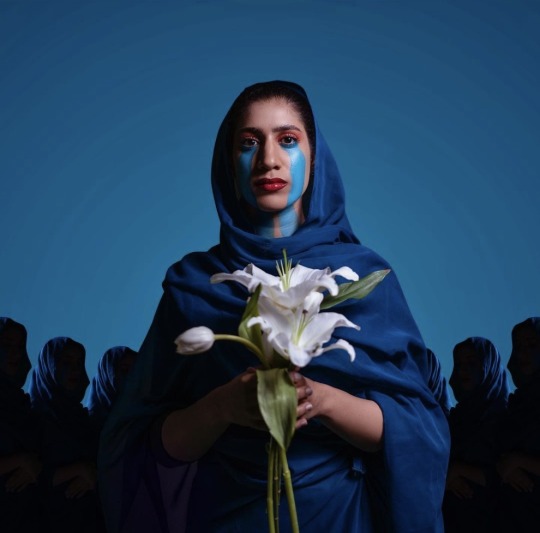
Renowned figures such as American singer and actress Rihanna and Nigerian artist Davido joined the chorus of celebrities and high-profile artists who utilized their platforms to shed light on the crisis, further propelling the momentum of awareness online. This vividly underscores the profound impact of virality in shaping public opinion and underscores the critical importance of social media in enhancing visibility and fostering global support for protests. The viral image of the Kandaka served as a catalyst, creating a wave that stirred widespread calls to action.

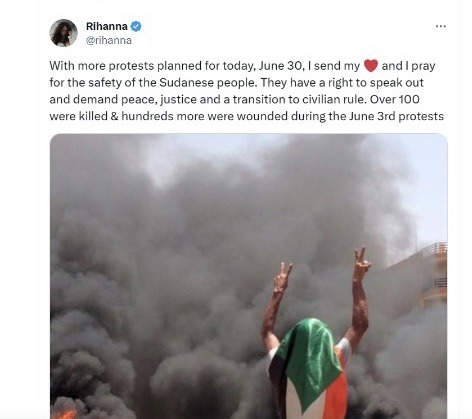
Navigating Change and Resilience Through the Digital Evolution of Expression
Looking back at how graffiti, art, music, and culture unfolded during the Sudanese revolution, it's clear these expressions aren't confined to physical spaces – they evolve and echo on digital stages. The Kandaka in the white toub isn't just an image; it's a powerful symbol, showing how art and culture shape stories and bring people together. In today's world, hashtags become anthems, and digital communities amplify calls for change. The Sudanese revolution teaches us about the enduring strength of creativity in tough times. The Kandaka's journey from streets to screens, from local to global, shows us how art can spark change and resilience in the face of challenges.

References
How art helped propel Sudan’s revolution. (n.d.). United States Institute of Peace. https://www.usip.org/blog/2020/11/how-art-helped-propel-sudans-revolution
Roussi, A., & Lonardi, M. (2021, July 6). Art on the front lines of a changing Sudan. Al Jazeera. https://www.aljazeera.com/features/2021/6/30/art-on-the-front-lines-of-a-changing-sudan
From white Teyab to pink Kandakat: Gender and the 2018-2019 Sudanese Revolution. (n.d.). Journal of Public and International Affairs. https://jpia.princeton.edu/news/white-teyab-pink-kandakat-gender-and-2018-2019-sudanese-revolution
#mda20009#sudaneserevolution#2019sudanuprising#digitalcitiziship:protest#digitalcitizinship:activism
1 note
·
View note
Text
‘Is blogging still relevant in the age of TikToks and Instagram?’
Imagine waking up in a world devoid of creative content, with the internet still readily accessible but just a backspace away from insignificance. I find it impossible to picture the media landscape without blogging and here’s why.

To grasp its continued relevance, we need to redefine what blogging truly is. Agrawal (2022) defines blogging as the act of creating information for the internet to enlighten, educate, or promote your opinions about any subject. Due to its history, I believe most people view it as a purely written form of expression, which leads them to assume that in the era of TikTok and Instagram, blogging is obsolete. This blog sets out to debunk that notion but first, a brief history lesson.

Blogging traces its roots back to the late 1990s when people started maintaining online diaries, sharing experiences, opinions, and daily life happenings. These early blogs were simple and focused on personal storytelling. Like, Slashdot and Scripting News.


The early 2000s saw blogging outgrow personal diaries and venture into news, politics, and niche subjects. Blogs like The Huffington Post emerged as influential media outlets.

As the late 2000s unfolded, blogging transformed into a dynamic public sphere where individuals could delve as deeply as they desired into any given sector. Social media platforms like Facebook, Twitter, and Instagram complemented blogs, enabling bloggers to extend their reach, engagement, and content promotion, be it about lifestyle, travel, food, or fashion.
The rise of platforms like YouTube, Instagram Stories, and TikTok redefined the medium and repositioned it to be more substantial, ushering in microblogging and video content. Bloggers adapted, incorporating multimedia elements into their blogs to remain relevant.
If you want to dive deeper into history, watch this!
youtube
Thanks to these technological shifts, blogging emerged as more relevant than ever. Let's take Zoella as a prime example of its continued relevance. Zoella initially established her online presence as a Tumblr blogger in 2009, sharing posts on fashion, beauty, and daily life.
She later transitioned to YouTube, where she continued to create content related to beauty, fashion, and lifestyle. Her YouTube channel gained immense popularity, establishing her as one of the most influential YouTubers in the beauty and lifestyle niche.
Here is one of her earlier fashion-focused videos.
youtube
And now for one that is more recent, where you can see how her style has evolved and expanded beyond fashion to create a more intimate style that connects with the audience.
youtube
Blogging is all about sharing your thoughts, right? Well, TikTok came along and gave it a fun twist, turning content into engaging videos. It's like blogging's cool cousin.
You've got Charli D'Amelio doing vlogs about her daily life, and @leveloneadult making adulting less confusing. Plus, there's @Brittany_broski, spinning witty skits and satirical commentaries.
TikTok is a hub for creativity and humour, reflecting the ever-changing digital landscape. It has changed blogging, and it's awesome to see how content creation finds a unique voice in this evolving world.
In conclusion, if you've ever wondered whether blogging retains its significance in a world dominated by Instagram and TikTok, the answer is yes. As we redefine the essence of blogging, we discover that it's not really about the medium; it's about the message. Whether it's a heartfelt blogpost, Instagram posts, or TikTok videos, the core purpose of blogging—sharing thoughts, educating, and enlightening—remains intact.
So, next time you navigate the digital realm, remember that blogging isn't merely a relic of the past but a lively part of the content creation narrative.

References
 Agrawal, S. (2022). What is Blogging: The Ultimate Guide to Blogging for Beginners. logging: The Ultimate Guide. Available at: https://www.digitalgyd.com/blogging/#:~:text=In%20other%20words%2C%20blogging%20is%20the%20art%20and,stories%20it%20has%20completely%20transformed%20over%20the%20years. [Accessed 30 Sep. 2023].
1 note
·
View note